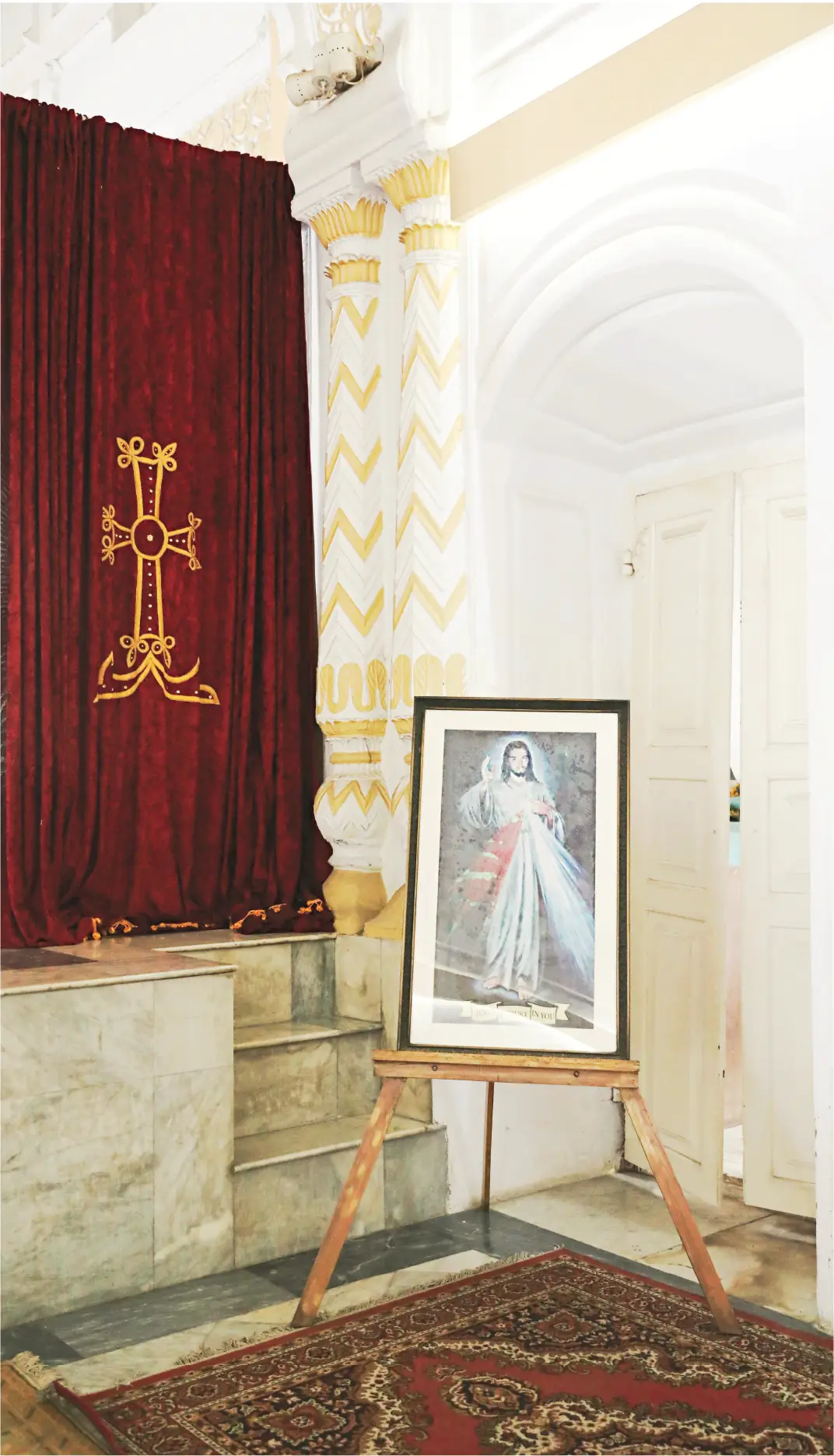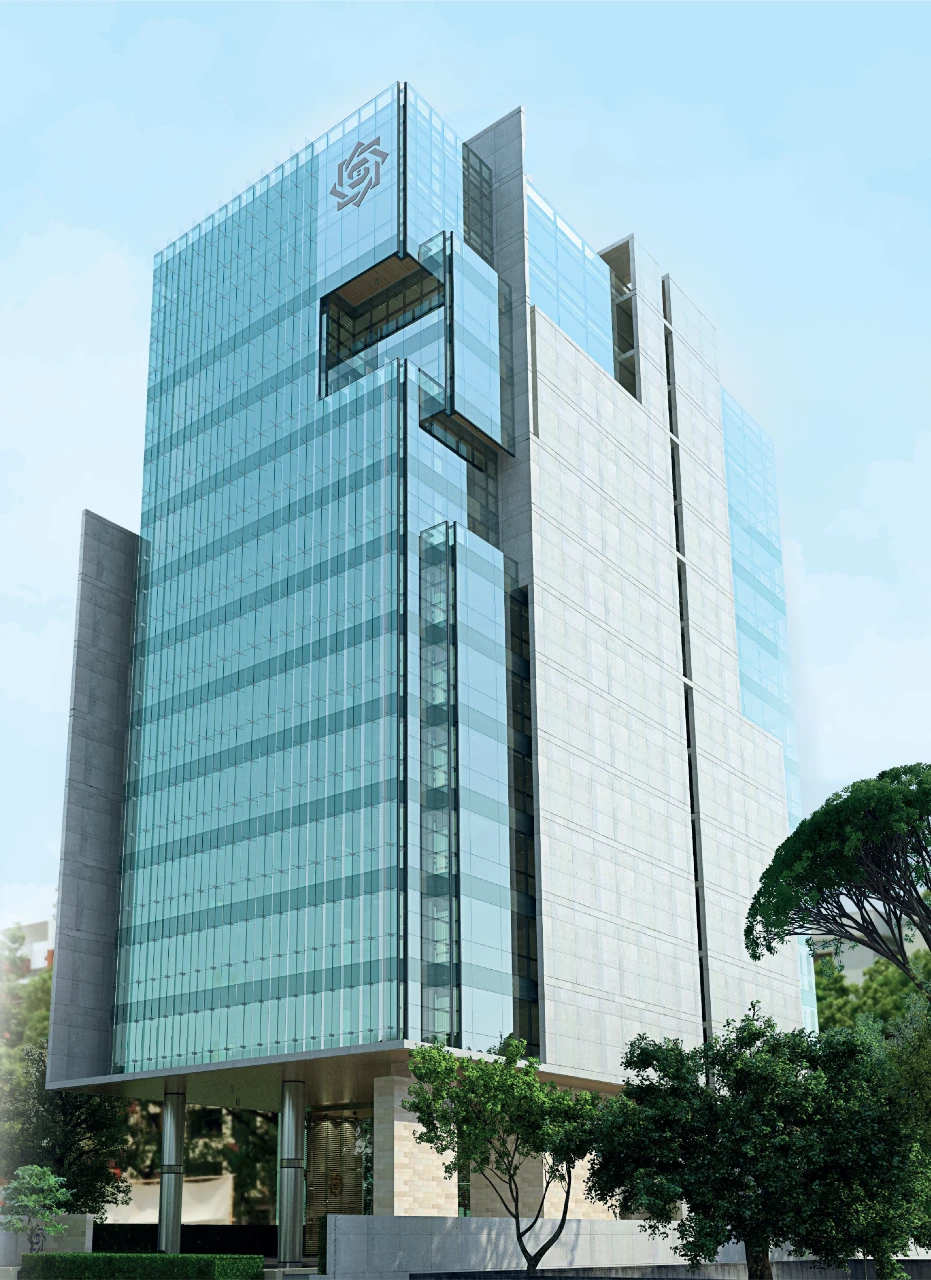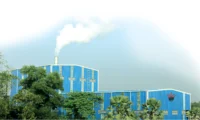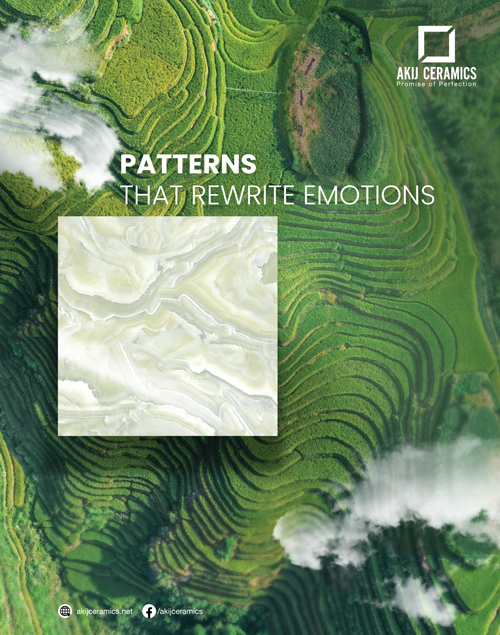Author: admin

Remains of ARMENIA
As you walk through that particular street of Armanitola where the Armenian Church has been perching for almost two and a half centuries, its white coloured skin subtly piercing you with an invitation to enter inside, a peculiar sillage coming to life from the hundreds of variants of notes from the line of perfume shops beside, mixed with the eerie scents carried by the winds flowing over the Buriganga which is just within a minute of walking distance, will hit your nostrils. Soon, you will start noticing all the examples of unplanned and unappetising architectures of different heights and looks that popped up in the recent decades and still keeps popping up every now and then with no signs of stopping, trying its best to engulf the church with the shadows of its murky glory. The current state of many of the historical structures that had been living in Old Dhaka for centuries, is just like the present attire of Old Dhaka that we gradually forced her to wear – a living testament of what we were, what we could have been and what we are now. Despite our passionate habits of being collectively amnesic towards history and always letting our greed filthily winning over the importance of preservation of historic structures, some monuments somehow still managed to sail through the waves of time and survived. While many are only skeletons of their mighty past or half alive with all their graciousness, some continue to breathe. As if in an endeavour to effortlessly remind us of the fascinating times that are by gone. The Armenian Church in Dhaka is one of them. The Armenian Apostolic Church of the Holy Resurrection or simply known as The Armenian Church, is located in 4 Armenian Street, Armanitola between Armanitola and the Mitford Hospital Dhaka, is named after the Armenian Colony which settled here in the early 18th Century. It was built in 1781 on the ruins of an earlier chapel and later, in 1837, a steeple serving as a clock tower, was added towards the west, near the belfry. This collapsed during the earthquake of 1897. The name of the church and the area it is situated in, easily gives off hints about certain aspects of its stories. When you think of historical structures, particularly about those which were built during the colonial era, it is obvious that you would relate it with the British period in Bengal. But the British were not the only Europeans who sailed here in the heydays of business and commerce in the region. The Dutch, Portuguese and notably French traders also set important businesses in parts of present-day Bangladesh with majority of the setups being in Old Dhaka. Another typically less talked about history of Europeans who set up a colony here only with the intentions of business, is the enthralling history of Armenians in Bangladesh. Although there is no exact record of when the Armenians first came to Dhaka but based on historians and the evidence of dates on ledger stones, it is assumed that they first came to Dhaka around early 18th century and most were engaged in the jute trade and the community was small but wealthy. Interestingly parts of the gardens of Shahbag, Ruplal House and the plot where Bangabhaban stands today, belonged to Armenian landlords. As you enter the church premise, you will be welcomed by an inexplicable aura. When you start your curious walk inside the church compound, what will make you wander in wonder at first are all the ledger stones surrounding the main church building. A few of them dug even before the church was built, these are graves of Armenians who rest here, each with their different stories. On one side, an age-old Armenian residence rests, almost in ruins and not allowed for visitors to enter anymore due to safety issues, as there are risks of it crumbling anytime. At another side amongst the calmness of ledger stones, stands a sundial. You will be even more surprised with a touch of eeriness after you enter inside the church and notice that there are ledgers stones beneath some of the benches of the prayer hall too. Imagine sitting on a bench set above someone’s grave who died decades back, spooky? There are also elements embodying biblical visuals, including a painting of a scene from The Last Supper. There are a plethora of details about the entire architecture of the church, the history of Armenians in Bangladesh, the context of their arrival and their life in Dhaka, etc., which are difficult to fit within the constraints of a magazine, and above all the distinct aura that spaces like these holds, which is almost impossible to portray with words in any format. And your best option to experience it is by visiting the space. With that being said, this magnificent monument might have breathed its last long back or would have been in the verge of turning into complete ruins, just like many of its kind in the area! But it solely survived due to one Armenian gentleman, Michael Joseph Martin. The stories of what Martin did to ensure the survival of this last monumental remnant of Armenians in Dhaka, is beyond heroic. In the mid 1980s when the church was in a horrible state, Martin took charge of the place in a turn of events. Despite all the grievous hindrance he had to endure from the locals, including property-related issues which he solved at court, illegal grabbing of the space and misusing for profit, and even life threats, Martin along with the support of his family firmly managed to spearhead the restoration process and later dedicated the rest of his life to keeping the church breathing. Martin was the last Armenian resident in Dhaka. Due to health issues, he had to move to Canada in 2014 to stay with his family. During the pandemic, the former custodian of the church passed away at the age of 89 and then
Read More
Innovation unleashed at the Ceramic Expo Bangladesh-2022
The first few teasers of the Ceramic Expo Bangladesh-2022 ushered in the forthcoming of one of the biggest and highly anticipated ceramic events in the country. The event took place in ICCB, Dhaka, from 24-26 November, 2022, and was buzzing with visitors all three days. The Ceramic Expo housed 120 exhibitors, 300 brands from 20 countries, and 500 delegates, along with a whopping 23,000 visitors. It brought under one roof exporters, manufacturers and suppliers of ceramic and related products. During the event, visitors came from all over, dispersed excitement across the venue, and filled it with murmurs of conversations. As excitement spread, we saw visitors and exhibitors interact, and the event turn into a big success. Sheltech Ceramics one of our Platinum Sponsors exhibited their largest tiles Sheltech Ceramics Limited, showcasing the country’s largest (1m x 1m) tiles, participated in the prestigious Ceramic Expo-2022. Owing to the exquisite design of the pavilion, it received the Best Pavilion Award (Gold) from the jury members. Sheltech Ceramics embellished its pavilion with a minimalistic touch of white and blue. Architecturally, the pavilion was designed in a way that was intended to draw visitors’ a-ention easily. One of the key cornerstones of this pavilion was to portray product manufacturing dynamism with diverse dimensions and types towards all segments of the target group or customers, like architects, corporate clients, end users. Additionally, the tiles were displayed in a manner that covered every segment in terms of colour and size. It is worth mentioning that, with modern machinery enriched with European technology, Sheltech Ceramics is equipped to produce 39,000 sqm of premium wall and floor tiles per day spanning multiple sizes and textures. Exploring the pavilion, one could see that the tiles were shown exactly as they would be when tiled. The white backdrop was used to accent the vibrant collection to draw more visitors’ a-ention. Other tiles were displayed on the walls; alongside those, photos of the factory took over some portions of the walls, demonstrating the magnitude of the company’s production capacity. Especially, the company’s remarkable journey is portrayed on the front wall. Coming to the centre-stage of Sheltech Ceramics, the Prime Series was the frontrunner amongst the displayed products and was highlighted throughout the event. The 1m × 1m tile from Sheltech Ceramics is the largest floor tile manufactured in Bangladesh and was an absolute head-turner at the event. Launched in May 2022, the Prime Series is produced in an environmentally sustainable way. This 12-mm-thick Prime series floor tile ensures a lot of benefits, including a moderate water absorption rate, a robust and extremely durable texture, a glossy, light-reflective surface, and the ability to withstand thermal stress. It has diverse and a-ractive pa-erns with flawless textures, and most importantly, it is easy to clean and maintain. Mr. Kutubuddin Ahmed, Chairman of Sheltech Group and Envoy Legacy, and Mr. Tanvir Ahmed, Managing Director of the same, graced the event with their presence along with other marketing personnel. Sheltech Group, with more than three decades of experience, launched Sheltech Ceramics in 2019 which exclaims an unwavering commitment to innovation and design and moves forward with ongoing trends. DBL Ceramics joined in as a Platinum Sponsor as well acquiring 70% lead conversion DBL Ceramics became part of the Ceramic Expo Bangladesh-2022 as a Platinum Sponsor and showcased five new products in their pavilion. DBL Ceramics’ research and development team worked tirelessly for six months to plan some of the best and most recent tile collections from DBL Ceramics to display in the pavilion. As one walks towards the pavilion, one is struck by the vibrancy of the tangerine laser-cut design pa-erns on the walls and roofs of some pavilion sections. The products were displayed on the walls, screens, and, in most cases, retractable panels and drawers. Among the various elements of the pavilion, one wall featured a sophisticated analog clock and a corner with an all-white conference table. The pavilion showcased not only the new and innovative products from the catalogue, but also had exclusive insights on upcoming products that DBL Ceramics was working on at the time. The front runner at their pavilion was the Glue and Granilla tiles, which is a glazed porcelain, and has a premium decorative texture. Having granules glued to the surface makes it anti-slippery and abrasion resistant. A leading brand with over 160 dealers and six major display centres across the country, DBL Ceramics is expanding and has a new extension called Bright Ceramics. The company adopted the practices and concepts of Industry 4.0 and has factories with state of the art machineries. Mr. M. A. Jabbar, Managing Director, Mr. M. A. Rahim, Vice Chairman, Mr. M. A. Quader, Deputy Managing Director and Group CEO, Mr. Md. Bayazed Bashar, Head of Operations of DBL Ceramics, along with other senior officials graced the event with their presence. There were special appearances from celebrity guests such as Ms. Aupee Karim and cricketer Taskin Ahmed. And finally, there were also live sessions with industry experts. DBL Ceramics’ strategy for the 2022 expo was to display the newest innovations. Every year architects, designers, and experts from dierent companies and oices visit the Expo and extensively engage with the stalls. At the 2022 Expo, DBL Ceramics focused on acquiring these leads, and had a 70 per cent conversion rate among all leads. “The 20-30 per cent that we weren’t able to convert was because we weren’t planning to launch those products at the time,” said Mr. Bayazed Bashar, Head of Operations at DBL Ceramics. The Expo was a grand success, and we had tremendous response from visitors and exhibitors. We can only hope that the hype will be even more for the Ceramic Expo 2024. BCMEA Report
Read More
Shahjalal Bank First Green Building in the Banking Sector of Bangladesh
Shahjalal Islami Bank PLC is playing an important role in providing investment in all areas of manufacturing and service sectors, ready-made garments, trade financing, infrastructure and agriculture. Starting operations on 10 May 2001, the bank is running with 12,40,000 deposit and investment customers. As a third generation Islamic Shariah-based private commercial bank of the country, Shahjalal Islami bank plc has reached a strong position within a short span of time and has been playing a worthy role in the economic development. The financial base of this bank is very strong. The bank has currently been providing banking services to its customers with great reputation and trust through 140 branches, 4 sub-branches, hundreds of ATM booths and agent banking outlets, one offshore banking unit and priority centre across the country with 3,000 staffs. It has its iconic 17-storied building with basement on Gulshan Avenue in the capital Dhaka, where the bank’s head office operations are being conducted and being USGBC Lead Gold certified, this building is the first green building in the banking sector in the country. Renowned Architecht Prof. Shamsul Wares has designed the building. The total deposits of this bank (as on September 2023) is about Tk. 24,421.70 crore and investment amount is Tk. 23,023.45 crore. The amount of import trade in first nine months was Tk 18,982.00 crore and the amount of export trade was about Tk 18,596.00 crore. Shahjalal Islami Bank’s credit rating is AA+ for long term and ST-2 for short term as per Emerging Credit Limited (ECRL) rating. This rating proves that the bank is one of the leading financially strong banks and both customer deposits and investments in this bank are safer and risk free. It has launched Islamic Credit Card following the Wakalah concept of Islamic Shariah. It has 24-hour ATM service and real time online banking and SMS push-pull service. It has agreements with more than 20 of world-renowned remittance companies to provide overseas remittance services, including Western Union, MoneyGram, RIA, Transfast, BRAC Sason, and Al Zaman. Expatriate Bangladeshis can send home hard-earned money, which their relatives can withdraw from any branch of the bank. Moreover, all the branches have facility of online-based utility bill payment. A customer can deposit all types of fees and taxes of Titas Gas, PDB, PalliBidyut, WASA, DPDC, DESCO and BTCL through any branch of Shahjalal Islami Bank PLC. All its branches have e-GP service for respected traders, through which all types of government tenders can be submitted online. No charges are levied for pay orders associated with this e-GP. Shahjalal Islami Bank PLC is working for bringing the people of remote areas under banking services. Thus it is expanding branches and sub-branches. The bank wants to deliver everyday financial services and products easily to the doorsteps of common people. As part of the financial inclusion programme, it wants to extend banking services to all sections of the society. The bank’s remarkable number of agent banking outlets and ATM booths set up in different parts of the country are providing 24/7 cash services. The board of directors of the bank is comprised of professionally competent persons who can formulate policies and guidelines and supervise business and ensure good governance in the banking sector. The Managing Director and CEO of the bank, Mr. Mosleh Uddin Ahmed, said, “Our goal is to provide welfare banking services to all the people. Profit making is not the main objective. For this purpose, Shahjalal Islami Bank Foundation has been established in consideration of social responsibility, through which this bank provides free medical treatment to helpless and poor people, distributes food and relief items in cyclone and flood-affected areas, provides scholarships to meritorious and poor students and other humanitarian aid. It is trying to spread light of education, public welfare activities, providing scholarships to 600 poor meritorious students studying at higher secondary and graduation level.” “We firmly believe if every financial and business institution spends even a fraction of their profits on improving education of children from poor families, we will definitely have a well-educated and skilled nation. Moreover, cooperation in the development of sports, social and cultural development is being provided as well. Shahjalal Islami Bank PLC provides free Hajj guides, umbrellas and bags to Pilgrims every year and provides bus service for Hajis from Haji camp to Airport.” National and International recognitions and awards Shahjalal Islami Bank PLC has received several national and international recognitions/awards in recent years for its excellent and cordial customer services. It has received the award as a recognition of success for achieving a satisfactory position in the sustainable rating by Bangladesh Bank. On 29 August 2023, The bank’s MD and CEO received the award from the central bank Governor. The Bangladesh Institute of Bank Management (BIBM) awarded Shahjalal Islami Bank PLC for Sustainable Rating 2023. The bank won the Gold Award (First Prize) at the 9th ICSB National Award for Corporate Governance Excellence-2021 for best presented annual report 2021. The award was given for ensuring sound corporate governance, discipline and transparency and accountability in the overall management of the bank. Institute of Chartered Secretaries of Bangladesh (ICSB) awarded Gold Award to this bank in Private Commercial Bank (Islamic Operation) category on 2022. Also, it won the 1st Prize in the 22nd ICAB National Award for best presented annual report. Shahjalal Islami Bank PLC won the first prize (Gold) in “ICMAB Best Corporate Award-2021” for best presented annual report of 2021. The Institute of Cost and Management Accountants of Bangladesh (ICMAB) awarded Gold Award to Shahjalal Islami Bank PLC as the 1st place in Private Commercial Bank (Islamic Operations) category on 2022. The bank has won awards in three categories from South Asian Federation of Accountants (SAFA) for best presented annual report of 2020. The bank won the first runner-up award in the Private Sector Banking Institutions category, the joint first runner-up award in the SAARC Anniversary Award for Corporate Governance category and the second runner-up award in the overall category. The bank is constantly working
Read More
Dream Train in the City of Oysters
Cox’s Bazar Rail Station has been built as a modern marvel for travelers.
Read More
Dream Train in the City of Oysters
Cox’s Bazar Rail Station has been built as a modern marvel for travelers. The new ‘green field’ of railway alignment has connected Cox’s Bazar, the top tourist destination and a rapidly developing region in Bangladesh. Finally, the long-term dream of tourists has been fulfilled. On November 11, 2023, Prime Minister Sheikh Hasina inaugurated the 102-kilometre dual gauge single railway line between Cox’s Bazar and Dohazari in Chattogram and the newly built Cox’s Bazar iconic rail station in the shape of oyster shell. The architect of the station, Mohammad Foyez Ullah, principal architect of Volume Zero Limited, took inspiration from the shape of an oyster for its exterior, which symbolises the beach. It is a station with marine atmosphere at first sight. With this, not only has the country’s leading tourist destination become more easily accessible, the entire southeast region is also poised for boosting trade and connectivity. The rail link project, the latest among several such communication-related projects, is part of an elaborate development scheme focused on Cox’s Bazar. Enhanced connectivity will be crucial for transportation of goods to and from Teknaf land port, as well as the growth of local industries including fish, salt, rubber raw materials, forest and agriculture products and dried fruits, according to local business experts. There are nine railway stations on this route, which means the surrounding areas will also see economic transformation. After Cox’s Bazar to Chattogram the stations are followed by Ramu, Islamabad, Dulahajara, Chakaria, Harbang, Lohagara, Satkania and Dohajari. The rail line will be extended to the Myanmar border, and to the planned deep-sea port on Matarbari Island. The extended part will have three stations – Ukhia, Teknaf and Ghumdhum (Bandarban). Cox’s Bazar Station to enhance tourists’ experience Nestled on a 29-acre expanse in Chanderpara, under the Jhilongjha union in Cox’s Bazar Sadar upazila, stands the paradise sighting station, located three km away from the sandy beach, built at a cost of Tk 215 crore. The six-storied building, covering 187,000 square feet area, captivates visitors with its unique exterior. The canopy serves a dual purpose — not only enhancing the station’s aesthetic appeal but also effectively cooling the building, ensuring proper air circulation, and welcoming ample natural light, according to the project engineers. Adding to the visual allure, a variety of coloured lights grace the front of the building, providing an artistic perspective to the station’s entrance. This station is Asia’s first 100 per cent tourist-friendly central air-conditioned multi-storied station. It has all kinds of facilities for tourists. Arrangements have also been made so that tourists can visit Cox’s Bazar in a day and return the same day without hotel accommodation. This railway is perfect Cox’s Bazar as an international tourist hub. It will be helpful to bring foreign tourists. Not only in the winter, tourists will be encouraged to visit Cox’s Bazar throughout the season including monsoon. In the construction of this iconic station, facilities of various modern stations of the world including China, Belgium, England, and Italy have been taken into consideration. A total of 250 engineers and more than 600 people, including 110 foreigners, were working in the entire project. After four years of hard work, the uniquely beautiful railway station building is visible today. On the ground floor, ticket counters, arrival and VIP lounges, ATM booths, Bank and forex service, pharmacy, post office, railway service office, baby care centre, information booth, and luggage lockers. The first floor offers a departure lounge, waiting lounges, display centres, locker room, prayer space, shops, and a cafe. Levels 2 to 5 house a shopping mall and food court, bookshop, five-star overnight stay option with dining, office spaces, restaurants, a multipurpose hall and hotel with recreational space for passengers. The hotel has 39 rooms. The fourth floor is intended to be leased for offices and conferences. Top floor reserved for future use. Travelers arriving at Cox’s Bazar by overnight train can conveniently store their belongings in lockers and explore the beach and other tourist spots during the day before catching a night train back to Chattogram or Dhaka. Tourists can leave their luggage in station lockers while they enjoy their time sightseeing at the beaches and tourist sites. Around 500 tourists will be able to keep their luggage in the station lockers at a time. As a result, tourists would be able to leave Cox’s Bazar without staying at night in hotel. However, they have to pay locker rent for this. The station is equipped with ample amenities, including escalators, lifts, parking area and refresh rooms for men, women, and those with physical disabilities. Accessing any of the three platforms is made easy with a footover bridge connected to escalators, staircases, and a ramp bridge facilitating movement between platforms. The rail station also features separate facilities for women, children, the elderly people. The Cox’s Bazar station has the capacity to transport around 50,000 people each day, as well as facilitate the operation of wagons for transporting fish, dried fish, salt and other items. Work of the project is being completed in two parts with China Railway Engineering Cooperation (CREC) and Toma Construction carrying out the first part from Dohajari to Chakaria and China Civil Engineering Construction Corporation (CCECC) and Max Infrastructure Limited are doing another part from Chakaria to Cox’s Bazar. Additional Deputy Inspector General of Tourist Police Cox’s Bazar region Apel Mahmud said the arrival of tourists in Cox’s Bazar will increase, thanks to the train service. All kinds of preparations have been made for the service and safety of tourists, he added. Passengers say the journey is enjoyable. A crooked rail line has been built through the green field and forest. Sometimes the hills touch, sometimes the eyes will be drawn to the unique beauty of the green village of Bangladesh. A hundred kilometers of railways has completed to see such a scene. Every station is equipped with relay batteries, generator rooms, sewage and waste management facilities, and energy-saving features such as solar panels. Both meter and broad gauge rail
Read MoreAhead in Time’s Silent Symphony
Beyond his role as an innovative architect, Muzharul Islam was characterised by humility and an unassuming nature. His consistent choice of traditional clothing and a preference for a modest lifestyle indicated a deep commitment to his craft rather than a pursuit of personal recognition. The simplicity and focus on perfection in his work underscored the profound impact of his architectural contributions, and the enduring prominence of his legacy in South Asian architecture speaks volumes about his unwavering dedication and passion.
Read MoreFu-Wang Ceramic Industry A Journey of Resilience and Growth
FU-WANG Ceramic Industry Limited, founded in 1995 as a joint venture between Taiwan and Bangladesh, has evolved into a major player in the ceramic industry. Despite Taiwan investors’ departure in 2008, the company continued to thrive, reshaping the landscape of ceramic production in Bangladesh. During the 1990s, Bangladesh heavily relied on ceramic imports from countries such as China, Sri Lanka, Spain, and Italy. Fu-Wang entered the market and made a significant impact. Subsequently, other prominent players like RAK, CBC, and Mir Ceramic joined, solidifying their presence in the country’s tiles market. Presently, RAK, DBL, Fresh, Fu-Wang, and X Ceramic are the key players in Bangladesh’s tiles sector. With an aggregate investment of $1.8 billion in the ceramic sector, of which 66 per cent is allocated to the tiles, the domestic tile market is valued at $650 million. Fu-Wang Ceramic Industry went public in 1998, listing its shares on the Dhaka and Chattogram Stock Exchanges. Fu-Wang Ceramic has created a good number of employment opportunities. Its products are manufactured in the factory of Gazipur. The company has since maintained impressive annual growth, consistently achieving a 20 per cent increase. Product diversification and challenges faced Fu-Wang Ceramic Industry is known for producing two types of products: those tailored for the mass market including industries, universities, shopping mall etc. and luxurious tiles designed for apartments, hotels and offices. The company has also introduced high-quality brands like Picasso and Picasso Premium, offering larger wall sizes and various floor sizes tiles under the guidance of European and Asian technologists. The foundation of Picasso Premium 60x60cm PGVT tiles lies in state-of-the-art robotic technology. Each tile is crafted with unparalleled precision and accuracy, ensuring uniformity in size and shape. The company employs Nano Technology in the production of PGVT tiles, enhancing their durability and shine. This advanced technology creates a protective layer on the tile surface, making them resistant to scratches, stains, and wear. The timeless elegance of marble, the warmth of wood, or the modernity of concrete, Fu-Wang designs capture the essence of nature and elevate the interior design to new heights. Each of 60x60cm PGVT tiles is meticulously packed with a surface protective film. This film safeguards the tiles during transportation and installation. However, the industry currently is facing a range of challenges. These include difficulties in opening Letters of Credit (L/C), surging natural gas prices coupled with low gas pressure, and unreliable electricity supply to factories. Moreover, navigating the intricate landscape of government policies has posed additional obstacles for businesses in Bangladesh. Besides, current economic headwinds has contributed to decline in the sales of the ceramic products. To carry on the business, the government should withdraw Supplementary Duty (SD) on the local ceramic products and supply gas and electricity uninterruptedly to the factories. The CEO of Fu-Wang Ceramic Industry Limited (FWCIL), Mr. Rafiquzzaman Bhuiyan, shared his experiences with the Ceramic Bangladesh (CB) in an exclusive interview. Adapting to market dynamics Despite these challenges, Fu-Wang Ceramic Industry remains steadfast in its commitment to leading the tiles sector in Bangladesh. The CEO recognises that competition is intensifying, and only large companies will be able endure while smaller ones might face closure. Making profit is tough due to competition. Besides, the demand for high-value and luxurious products is increasing in local and international markets. So, small companies have to compete with large companies. However, considering current market demand, they have to change product designs in accordance with new technology. Now local companies are meeting 85 per cent domestic market demand. And the rest of 15 per cent is met by imported products. If they can reduce import dependency further, dollar reserve will increase. So, policy support is crucial. “Our plan for the future is to manufacture selective and valuable products to compete in the market. We will expand our production base. Mass production helps to reduce product costs. We will produce high-value products in the future increasing market demand,” said Mr. Rafiquzzaman Bhuiyan. To meet the evolving market demands, Fu-Wang plans to adapt its product designs using new technologies. Moreover, they aim to reduce their dependency on imported products to bolster their reserves. The company’s strategy for the future is to manufacture selective and high-value products to cater to the increasing demand in both local and international markets. Export challenges, domestic potential While the export market has presented challenges due to global competitiveness, the domestic market for tiles has experienced significant growth. Changes in people’s lifestyles and increased per capita income have contributed to the surge in demand. Fu-Wang is exploring the possibility of entering the tableware manufacturing sector and is focusing on branding and digital marketing to expand its market presence. A call for government support and FDI The domestic demand for tiles has increased vastly thanks to change in people’s lifestyles and booming construction sector. A good number of companies have also been established here. In Bangladesh, the number of tile companies may further go up as tiles are now used in rural areas too. So the market is expanding, and it will continue to expand. People are spending more money on their houses as a pre-emerging country. In this context, Fu-Wang management is planning to what type of new products can be brought in the market in future. Meanwhile, Bangladesh has made a reputation in the international market exporting high-valued tableware products. However, there is a huge potential for foreign direct investments (FDI) in Bangladesh. The government has set up 100 special economic zones, something which is a positive initiative to bring more FDI. Also, there are some challenges including land scarcity, gas and utility supply, and the business operational registration process. All problems should be resolved as soon as possible. Besides, transparency and accountability are crucial to ensure ease of doing business. Basically, the country’s all services should be available on online. Mr. Rafiquzzaman Bhuiyan underscored the need for government support, including withdrawal of supplementary duty on local ceramic products, reducing import duties on raw materials, uninterrupted gas supply, and reliable
Read MoreSilence, an Integral Aspect of Architecture
As Nurur Rahman Khan commenced his discussion on architecture, a concept exists only as an idea that becomes apparent once it is created. Attaining the deep level of architecture requires a great deal of time, attention, and meditation. If we wish to reach that level of it, we must bring our soul to it. It could be difficult for the public to comprehend or accept it entirely. Nurur Rahman Khan began his architectural career at Bangladesh University of Engineering and Technology (BUET), despite lack of understanding of how architecture functions. The sole realisation he possessed was that architecture constitutes a fusion of engineering and creativity. In his formative years, he delved deeply into music, photography, graphic design, acting and writing alike. Before he began his career in architecture, he had no prior experiences in drawing or sketching. Over the time, he acquired the skill of drawing architecture from mathematical drawings in the form of ‘axonometric’ drawings. He did not become aware of architecture until the very end of his first academic year, since it was then that he was able to appreciate architecture’s beauty. As a consequence of his subpar craftsmanship, he used to receive lower grades. After his first year of school, he began going to the library to learn about the aesthetics of architecture. It was at that point during which he began comprehending the aesthetics of architecture, and since then he never stopped his journey to acquire knowledge about it thereafter. He continued by outlining the method by which architects prioritise aesthetics over attaining the fundamental purpose of their design, instead of flaunting the design, one should be proud of it. The greatest architect of Bangladesh, according to him, is Muzharul Islam, and his level of prosperity ends there. We are forfeiting numerous facets, failing to appreciate the true essence of architecture. Our focus has shifted towards the grandiose, the towering, and the extravagant, relinquishing our humanity to the allure of grandeur and brand-centric values. Addressing the architects within our community, NR Khan inquired about the apparent challenge in reaching the remarkable levels of creativity and imagination set by Muzharul Islam in the field of architecture. Tanya Karim and Nurur Rahman Khan, who are partners, founded an architectural firm with the goal of significantly altering the architectural arena. Their office became known for its theoretical pretext, search for situated modernity, and use of historical and cultural allusions. In the summer of 1991, Tanya Karim, NR Khan & Associates became known as an architectural firm leading the way in modern ideas in Bangladeshi architecture. Throughout his academic journey, he teamed up with Tanya Karim as a groupmate, and their collaborative synergy flourished after they graduated between the years 1992 to 1993. In his viewpoint, when discussing Tanya Karim, he recognised her as a nurturing figure who would impart knowledge to classmates just before exams. He highlighted the enduring complementarity between himself and Tanya Karim. During their studies with her, a profound mental connection was forged. Tanya Karim played a pivotal role in enlightening him about the intricacies of art, fashion, and other facets of design, drawing from her upbringing in a culturally enriched family. Their designs are always inextricably linked to the point at which the architecture’s user finds it worthwhile. One of their cherished projects is the Shanchita Residence, envisioned as a Baganbari- A House in a Garden. It was conceived with the idea of providing a nurturing environment for both the users and their children to cherish as they grow. The concept of Baganbari is not merely about architecture; it’s a philosophy woven into the very roots of the design. It is a place where family bonds are nurtured, and the architecture becomes a silent witness to the laughter, joy, and shared moments that shape the family. “A project is a canvas of someone else and we are the architects painting on it, if we indulged a self-centered design, it definitely would have a short lifespan,” Nurur Rahman Khan remarked. They (TKNRK) have secured positions of distinction in numerous competitions, notably triumphing in the National Competition organised by the Institute of Architects Bangladesh (IAB) in 2012. They clinched the 1st prize for their outstanding design of the Bangla Academy. The Bangla Academy project takes a multifaceted approach to sustainability rather than focusing only on being “environment friendly”. “Site” is the first sustainability metric that the project looks at. On the grounds of a historic building and later additions to the “Bangla Academy complex’’. In the modern era, there appears to be a tendency to use sophisticated design techniques and technology in order to achieve a “green” solution to building design. It is important to remember that utilising the actual “environment” is one of the most logical approaches to designing “environment friendly” architecture. The site, the environment, and the climate should take center stage. “Indifferent” methods can be used to create a successful “green” architectural design. As for the building design, a significant portion of the office building has been designed to benefit from natural ventilation and abundant natural lights. Most days, the interior is bathed in natural light, creating a well-lit and airy environment. Moreover, when discussing TKNRK, he emphasized, “We are forward-thinking individuals, acutely aware of the essence of our architectural pursuits. Our ancestors crafted cities like Mahasthangarh 2000 years ago without external guidance as today’s. Therefore, as architects today, why limit ourselves to the mundane concept of a ‘Kurey Ghar’ (hut) that does not align with our cultural heritage? Instead, let’s draw inspiration from the grandeur of the cities our forebears-built millennia ago and aspire to create something extraordinary. By utilizing costly materials to create an appearance of frugality, we are engaging in economic dishonestly within the country. This practice not only deceives the economy but also reflects a lack of integrity towards the materials themselves.” For him, it holds paramount importance to instill into people a genuine understanding of the true essence and user-centricity of architecture, steering clear of the reliance on
Read MoreRemains of ARMENIA
As you walk through that particular street of Armanitola where the Armenian Church has been perching for almost two and a half centuries, its white coloured skin subtly piercing you with an invitation to enter inside, a peculiar sillage coming to life from the hundreds of variants of notes from the line of perfume shops beside, mixed with the eerie scents carried by the winds flowing over the Buriganga which is just within a minute of walking distance, will hit your nostrils. Soon, you will start noticing all the examples of unplanned and unappetising architectures of different heights and looks that popped up in the recent decades and still keeps popping up every now and then with no signs of stopping, trying its best to engulf the church with the shadows of its murky glory. The current state of many of the historical structures that had been living in Old Dhaka for centuries, is just like the present attire of Old Dhaka that we gradually forced her to wear – a living testament of what we were, what we could have been and what we are now.
Read MoreInnovation unleashed at the Ceramic Expo Bangladesh-2022
The first few teasers of the Ceramic Expo Bangladesh-2022 ushered in the forthcoming of one of the biggest and highly anticipated ceramic events in the country. The event took place in ICCB, Dhaka, from 24-26 November, 2022, and was buzzing with visitors all three days. The Ceramic Expo housed 120 exhibitors, 300 brands from 20 countries, and 500 delegates, along with a whopping 23,000 visitors. It brought under one roofexporters, manufacturers and suppliers of ceramic and related products. During the event, visitors came from all over, dispersed excitement across the venue, and filled it with murmurs of conversations. As excitement spread, we saw visitors and exhibitors interact, and the event turn into a big success.
Read More












